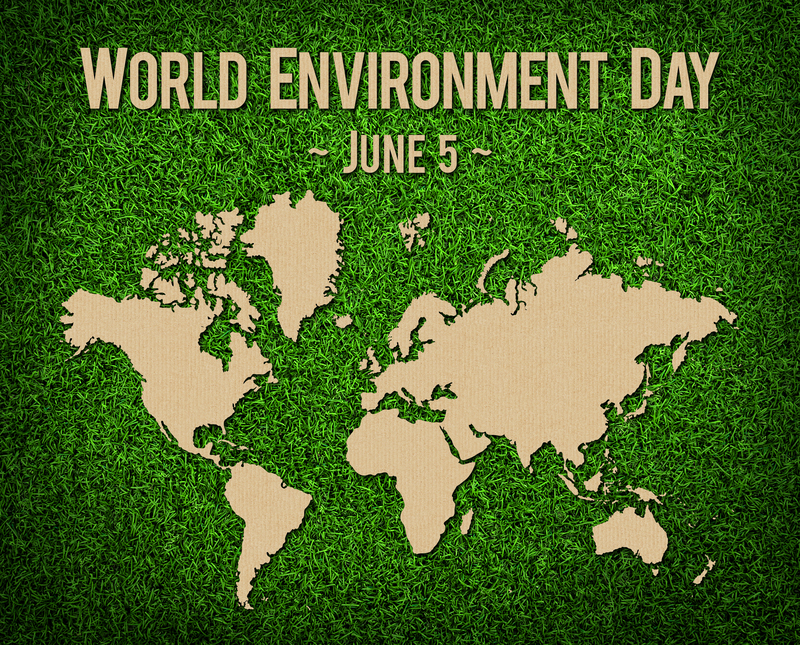Advocating for Responsible Packaging and Cardboard Disposal: Why It Matters More Than Ever
Packaging waste has become one of the most pressing environmental concerns in today's consumer-driven society. As e-commerce, retail, and supply chains expand, the use of cardboard -- while recyclable -- has skyrocketed, raising significant questions about responsible packaging and cardboard disposal. How can individuals, businesses, and communities promote sustainable practices without sacrificing convenience or quality?

Understanding the Importance of Responsible Packaging
Responsible packaging refers to designing, producing, and using packaging materials in a way that minimizes environmental impact throughout their life cycle. Today, cardboard packaging is widely used due to its versatility, strength, and recyclability. However, the sheer volume of cardboard thrown away or improperly recycled poses significant environmental risks, from increased landfill waste to unnecessary resource consumption.
Key Reasons to Advocate for Sustainable Packaging
- Environmental Protection: Reducing packaging waste lessens landfill crowding and decreases pollution.
- Resource Conservation: Sustainable choices save raw materials and energy.
- Consumer Demand: More consumers are choosing brands that demonstrate environmental responsibility.
- Compliance and Reputation: Many governments are introducing packaging regulations that businesses must meet.
Advocating for responsible packaging isn't just an ecological imperative; it's also smart business and a reflection of contemporary values.
The Lifecycle of Cardboard Packaging
To champion sustainable packaging and cardboard disposal, it's crucial to understand the journey of a cardboard box:
- Production - Cardboard is typically made from wood pulp, a renewable but limited resource. Virgin resources and recycled fibers are both used to produce the final material.
- Usage - Boxes are filled, shipped, and ultimately arrive at homes or businesses, sometimes serving only a single-use purpose.
- Disposal - End users either recycle the cardboard, repurpose it, or discard it in the trash, which may lead to landfill accumulation.
- Recycling - Properly recycled cardboard can be remade into new boxes, paperboard, and a range of products, extending the material's useful life and reducing demand for new resources.
Common Challenges in Cardboard Waste Management
- Contamination from food residue, oils, or mixed materials can make recycling more difficult.
- Improper disposal in regular trash rather than recycling bins leads to unnecessary waste.
- Lack of awareness about local recycling guidelines contributes to inefficiency.
- Excessive packaging and oversized boxes waste both material and space during transportation.
Best Practices for Responsible Cardboard Packaging
Both businesses and individuals play crucial roles in driving adoption of sustainable packaging and correct cardboard disposal practices. Let's review the best strategies for responsible packaging:
For Businesses
- Optimize Packaging Design - Aim for packages that are the right size for the product and use minimal material without sacrificing safety.
- Use Recycled Materials - Choose packaging made from a high percentage of post-consumer recycled content to conserve resources.
- Clearly Label Packages - Include disposal and recycling instructions directly on the box.
- Partner with Sustainable Suppliers - Only source materials from companies committed to responsible forestry and ethical supply chains.
- Support Take-Back Programs - Establish systems for packaging return, reuse, or recycling, especially for large shipments.
For Consumers
- Break Down Boxes - Flattening cardboard maximizes recycling bin space and facilitates processing.
- Remove Contaminants - Ensure boxes are clean and free from food or plastic that can ruin recycling batches.
- Reuse Creatively - Before recycling, consider ways to repurpose: storage, crafts, moving, or gardening.
- Stay Informed - Learn about your local recycling rules, as not all municipalities accept mixed or wax-coated cardboard.
The Positive Impact of Responsible Cardboard Disposal
When all stakeholders -- manufacturers, retailers, consumers, and municipal agencies -- advocate for responsible packaging and effective cardboard disposal, everyone benefits significantly.
Environmental Benefits
- Reduced Deforestation - Recycling and reusing cardboard keeps trees in the forest, maintaining biodiversity and absorbing CO2 emissions.
- Lower Carbon Footprint - Processing recycled cardboard uses far less energy and produces fewer emissions than manufacturing new cardboard from raw timber.
- Landfill Reduction - Cardboard takes up a considerable amount of landfill space when not recycled; responsible disposal addresses this.
Economic and Community Benefits
- Job Creation - Recycling systems employ workers and support industries focused on sustainable packaging solutions.
- Cost Savings - Reduced need for raw materials and landfill management lowers operational costs for companies and municipalities.
- Enhanced Public Image - Brands that prioritize responsible packaging build trust and loyalty with eco-conscious consumers.
Innovations in Sustainable Packaging
Technological advances and innovative design are transforming responsible packaging practices. Leading companies are investing in new materials and methods, such as:
- Biodegradable coatings that allow cardboard to break down more rapidly if it escapes recycling systems.
- Reinforced yet lightweight designs that minimize material use while maintaining structural integrity.
- Smart packaging with QR codes or labels that educate consumers on how to dispose of materials properly.
These innovations support a circular economy, where resources are reused, waste is minimized, and the environmental impact of packaging is significantly reduced.
Cardboard Disposal: Dos and Don'ts
The Proper Way to Dispose of Cardboard Packaging
- Do flatten all boxes before placing them in recycling bins. This step is essential for efficient transport and sorting.
- Do remove tapes, staples, and packaging peanuts. Small amounts of tape are acceptable, but as much non-paper material as possible should be removed.
- Do keep cardboard dry and clean. Wet or soiled cardboard may be rejected by recycling facilities.
- Do check local guidelines to confirm what types of cardboard are acceptable (corrugated, chipboard, etc.).
What Not to Do
- Do not bundle cardboard with trash or non-recyclable plastics.
- Do not recycle greasy pizza boxes - if only a portion is greasy, tear off and recycle the clean part.
- Do not throw cardboard in the garbage if recycling is available. Landfills represent a waste of valuable resources.
How to Advocate for Responsible Packaging and Cardboard Disposal in Your Community
Advocacy is most powerful at the community level. Here's how individuals and organizations can foster change:
1. Host Informational Workshops and Drives
Partner with local environmental groups, schools, or businesses to provide information about the benefits of cardboard recycling and responsible package design.
2. Petition for Better Recycling Services
If your area lacks adequate recycling infrastructure, organize petitions and collaborate with municipal officials to expand resources for responsible cardboard disposal.
3. Encourage Businesses to Commit to Sustainable Practices
Support retailers who use eco-friendly packaging. Provide feedback to companies, letting them know you value their sustainability efforts.
4. Lead by Example
Practice what you preach by recycling at home and sharing tips online. Social influence can make a big impact!

The Role of Policy in Promoting Responsible Packaging
Public policy is a cornerstone in mainstreaming responsible packaging and cardboard disposal. Around the world, governments are passing laws aimed at reducing packaging waste:
- Bans or fees on excessive packaging materials (especially single-use plastics)
- Mandatory recycling targets for certain industries
- Incentives and tax breaks for businesses that use post-consumer content or returnable packaging
- Public educational campaigns on best disposal practices
Businesses and consumers can further these efforts by staying informed about local legislation and supporting policies that prioritize environmental well-being.
Responsible Packaging: A Shared Responsibility for a Sustainable Future
Cardboard continues to play a vital role in modern commerce and daily life. However, only through responsible packaging design and correct cardboard waste management can we ensure that this convenience does not come at the expense of future generations.
Together, by advocating for sustainable packaging solutions, making informed materials choices, and disposing of cardboard responsibly, we can protect natural resources, reduce pollution, and inspire others to do the same. The journey toward a waste-free world begins with the simple act of caring for the packages we receive -- and what we do with them next.
Let's make responsible packaging and cardboard disposal not just a habit, but a movement.